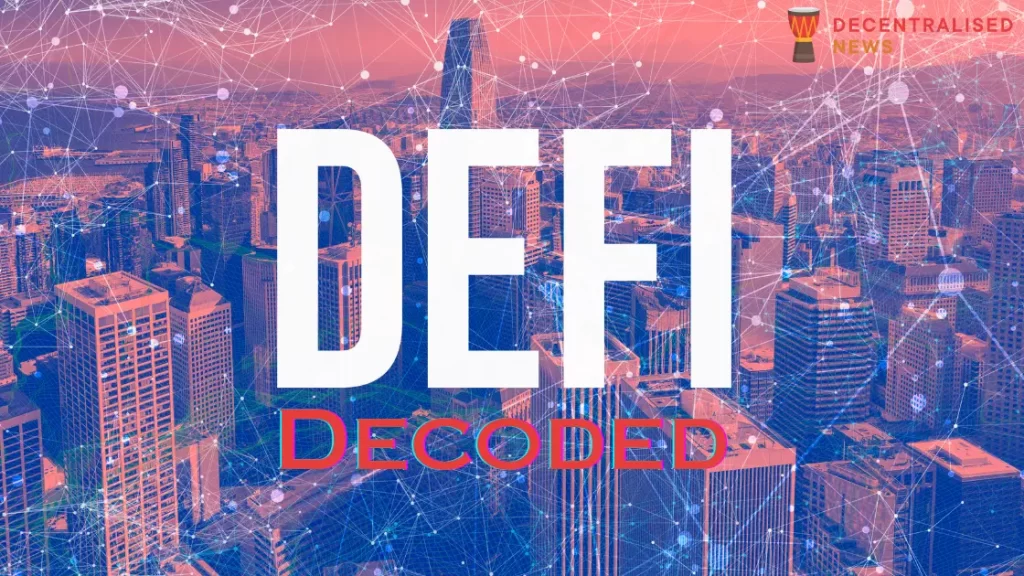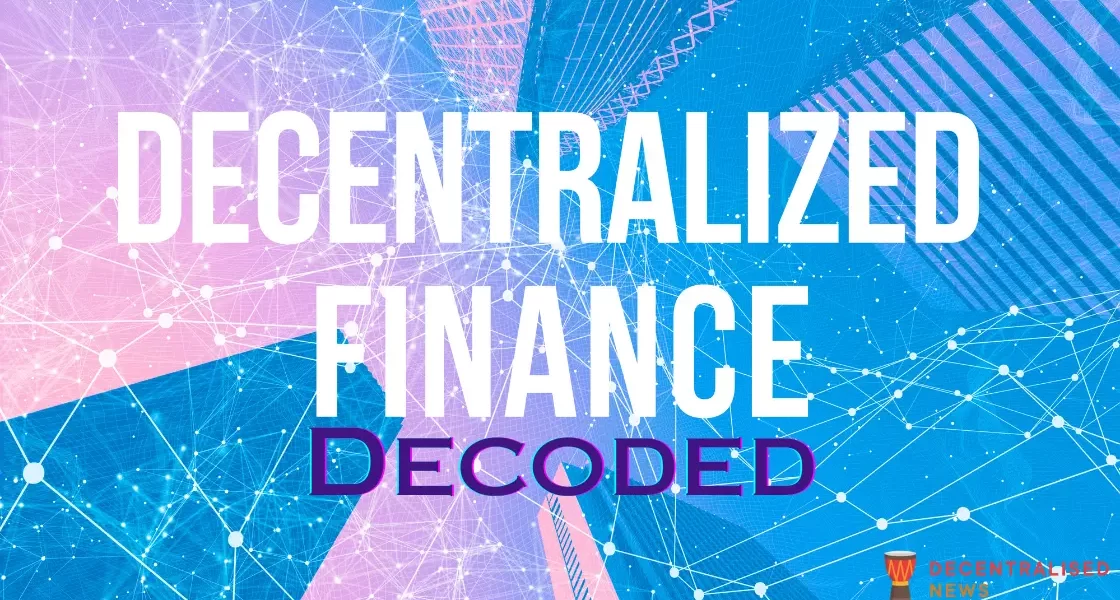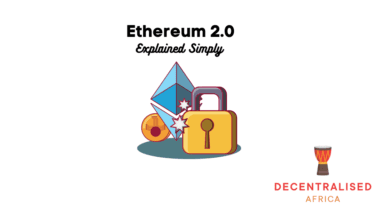DeFi Decoded: Unlocking the Power of Decentralized Finance
The world of finance is being remodeled, brick by digital brick. Decentralized Finance or DeFi is spearheading this transformation, heralding an era of open, permissionless, and inclusive financial services. This article aims to unravel the complexities of DeFi through the lens of 20 critical questions, offering insights and shedding light on this financial evolution.
20 Questions & Answers to Help You Understand the Basics
1. What is Decentralized Finance (DeFi)?
DeFi represents a spectrum of financial applications built on blockchain technologies, particularly Ethereum, designed to disintermediate traditional financial intermediaries.
2. How does DeFi differ from traditional finance?
Unlike traditional finance, which operates on centralized systems and intermediaries, DeFi employs blockchain technology to create a decentralized, open, and permissionless financial ecosystem.
3. What are the key principles of DeFi?
DeFi operates on the principles of transparency, open access, and financial sovereignty. These principles make financial systems more inclusive and efficient.
4. What are smart contracts and why are they essential to DeFi?
Smart contracts are self-executing contracts with the terms of agreement directly written into code. They play a crucial role in DeFi by automating financial transactions and ensuring trustless interactions between parties.
5. What is the role of blockchain technology in DeFi?
Blockchain forms the backbone of DeFi, offering a decentralized, immutable, and transparent platform to record transactions. Its peer-to-peer nature facilitates the direct interaction of participants, reducing costs and increasing efficiency.

Exploring DeFi Ecosystem
6. What are the different types of DeFi applications?
DeFi applications span across lending and borrowing platforms, decentralized exchanges (DEXs), stablecoins, prediction markets, insurance platforms, and yield aggregators.
7. What is Yield Farming and how does it work in DeFi?
Yield farming, also known as liquidity mining, is a way to earn rewards by lending or staking assets in a DeFi market. It encourages liquidity provision, powering the DeFi ecosystem.
8. How does a Decentralized Exchange (DEX) operate?
DEXs enable peer-to-peer trading of cryptocurrencies directly from users’ wallets. Unlike centralized exchanges, they don’t require intermediaries, reducing costs and risks.
9. What is a Stablecoin, and why is it crucial in DeFi?
Stablecoins are cryptocurrencies pegged to a stable asset, like the US dollar. They bring stability to the DeFi ecosystem, enabling smoother transactions and serving as a safe haven during market volatility.
- What is lending and borrowing in DeFi, and how does it differ from traditional banking?
DeFi platforms allow users to lend and borrow assets directly, bypassing intermediaries. Interest rates are often determined algorithmically, based on supply and demand, providing efficient market rates.
The Risks and Rewards of DeFi
- What are the potential returns in DeFi?
Returns in DeFi can be significantly higher than traditional finance due to the greater risk and the nascent stage of the ecosystem. Yield farming and staking are popular ways to earn returns.
- What risks are associated with DeFi?
DeFi is not without risks. These include smart contract vulnerabilities, platform insolvencies, and impermanent loss for liquidity providers. User education and risk management are crucial.
- How does DeFi handle security?
DeFi relies on the inherent security of blockchain and the rigorous auditing of smart contracts. However, it’s a shared responsibility, with users required to manage their private keys securely. Some of the best non-custodial solutions include: KeepKey and Argent, and Ledger.
- What is the ‘impermanent loss’ in DeFi?
Impermanent loss occurs when the price of a cryptocurrency changes after it’s been provided to a liquidity pool. This can lead to the liquidity provider having less of a certain cryptocurrency when they withdraw their liquidity.
DeFi Adoption and Future
- How can one get started with DeFi?
Starting with DeFi requires a digital wallet, some cryptocurrency, and an understanding of blockchain technology. Platforms like Metamask and Uniswap provide user-friendly interfaces for beginners. Choosing credible decentralised exchanges is also crucial.
- What is the current state of DeFi adoption?
DeFi is growing rapidly. As of mid-2023, the Total Value Locked (TVL) in DeFi stands at over $100 billion, up from around $1 billion in early 2020.
- How can DeFi lead to financial inclusion?
DeFi’s permissionless and open-access nature can extend financial services to the unbanked and underbanked, fostering financial inclusion.
- What are some real-world use cases of DeFi?
DeFi use cases range from peer-to-peer loans, interest-bearing savings accounts, stablecoin payments, to complex financial instruments like derivatives and insurance.
- What is the future of DeFi?
The future of DeFi looks promising with the potential to democratize finance, but it also faces challenges, including regulatory uncertainty and scalability issues.
- What are the regulatory challenges facing DeFi?
Regulatory challenges for DeFi include establishing the identity of participants, enforcing compliance and anti-money laundering (AML) measures, and dealing with cross-border transactions.
The world of DeFi is expansive, complex, and rapidly evolving. As we stand on the precipice of a new financial era, it is incumbent on us to comprehend, engage with, and shape this emergent landscape. Though filled with potential, it also demands caution and diligence, as with any frontier. Yet, one thing remains certain: DeFi represents a seismic shift in our financial foundations, one that is as promising as it is challenging.









